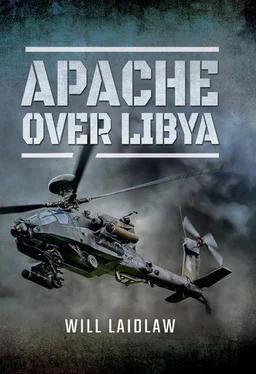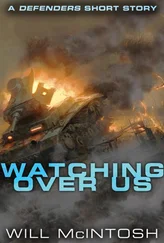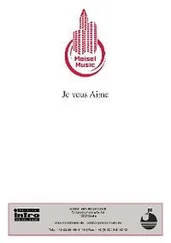Finally, it was time to sanitize and take a trip down the gangway. The team went out and kept to their night routine, remaining energetic well beyond breakfast. A spontaneous lock-in at an old town jazz club continued till dawn, then half the aircrew were invited for pizza and to watch the sunrise over the Mediterranean. We justified it to ourselves by claiming that we were in a night routine and therefore needed to remain nocturnal – no point in jet-lagging ourselves just for a few days. It was such a good night that we inadvertently repeated the itinerary the following night. Much thanks are due to the brothers who ran the club, who were not only wonderful hosts but, coincidentally, had grown up in Libya whilst their father was serving in the Italian military.
At the end of the second first nighters, with weary heads, we travelled back by taxi to the ship. As we approached the dock, the driver, who spoke no English, having listened to JB’s persistent monologue, leaned over to us, pointed to JB and exclaimed, ‘Il Radio!’Henceforth JB had a new nickname.
After a couple of nights off the line Ocean made her way back towards Libya, and having lived through one turn of the wheel we were anxious about our return. But morale was on the up because Wings had worked more magic; on board had arrived the 56 thRescue Squadron and three HH-60G Pave Hawks packed with well experienced rescue crews and a ‘brother aviators never get left behind’ attitude to their work. The extraordinary pararescuemen carried their motto, ‘That Others May Live’, with a calm, determined modesty. Five hours notice to move was replaced by seven minutes, and we knew they would come and get us no matter what. The following week brought them close to a call-out on several occasions as we encountered some extraordinary resistance from the ground.
The SA-24 of mission three was no isolated instance. Only a week after the first MANPAD shot against us, Reuben Sands and JB, with Big Shippers and Jay Lewis as wing, were leading a patrol on their way back from an inland strike west of Zlitan when SA-24 shot number two arced out of the monochrome nothing.
Big Shippers and Jay were the front aircraft of the pair, with a mile or so split between them. To their right lay the flat rural hinterland and in the distance the partial lights of Misrata. Zlitan was on their left, well lit and innocent-looking, as though war was a distant thought. In the front seat Jay was willing the sea on and their safety with it, knowing that these last few miles to the coast were their most vulnerable. But theirs had been an inland mission; they had crossed the coast, further north, an hour earlier and Khamis knew they would have to cross it again within the hour, low on fuel and ammunition. With a well-connected communications network he would also know where they had overflown, and if he was quick he could predict where they might attempt to exit Libya on their way back to Ocean . And on this night he got it right.
With the lights of Zlitan ahead and the safety of the sea beyond, the two Apaches pulled in the power and pressed hard for the coast. Pro-Gad on the ground could hear them and an SA-24 team with NVG would be able to see them too.
While interrogating the infrared and symbology in his right eye Jay sensed a streak of light low to his right in the black space below. They had been spotted and an illumination round was launched from a mortar, signalling pro-Gad’s intent. The now familiar pattern of anti-helicopter operations was in full swing.
Jay announced to Big Shippers, ‘Illum round, watch for the tracer…’
They watched the illum round rise, searching around it for the inevitable triple-A or machine gun fire. But the illum did not rise vertically as usual, but appeared more direct, perhaps at 45°, and it travelled quickly. Then it appeared to stop, pause, turn and rush at them.
A fraction of a second later, in Jay’s cockpit, the American lady announced, ‘Missile launch, 3 o’clock!’
A second later, JB transmitted from the other aircraft, ‘Missile seen! Your right.’
Jay and Big Shippers both now realized the illum round was in fact a heat-seeking missile, and it was heading for them. Milliseconds of comprehension in brilliant intense light, hands scrambling for the counter-measures, releasing both chaff and flares, Jay and Big Shippers could only watch and wait. The flares pumped out and away but still the missile kept its course, now straight and level, directly, it seemed, for the cockpit. This was it, the moment when you realize you are defeated, the part when you die. This was the end. Then one last release of flares with the missile metres from impact sent it dipping below the aircraft, close enough for Jay to recognize its markings and guidance fins, and into the ground.
‘It’s gone!’ Jay shouted simultaneously on the radio and through the intercom to Big Shippers.
Big Shippers banked sharply to the north-east and took the patrol away from danger, before making the quick plan to deal with the shooter. ‘Use the FCR, have a scan, could have been vehicle-mounted,’ he directed Jay.
Within a few seconds the FCR presented them with an array of possibilities. Linking the FLIR to the FCR, Jay visually examined the most likely firing point.
‘Got it! Vehicle, something hot on the flatbed, runners moving away… Two Ks! Come right, actioning missile…’ Between two palm trees sat a technical; they were still dangerously close, close enough for a PKM shot and well within MANPAD range. On the rear of the technical a multi-tubed missile system sat pointing upwards with one tell-tale warm tube.
‘That’s it, coming into constraints…’ Big Shippers steadied the aircraft and brought their own Hellfire seeker in line with Jay’s now constant laser.
‘Good messages, good range.’ Jay rushed through the last of his checks and pulled the left-hand trigger, sending the Hellfire into the technical, now less than 2,000m from them.
The missile went straight to the target, taking just five seconds, and shredded both the vehicle and the missile system it was carrying. The palm trees rippled with the shockwave and then sagged, dormant and bent by the blast. Nothing moved, no one fired up at the aircraft and all was dark. SA-24 number two had been defeated, the defensive aids suite had carried us safe through once more. The flares were working – but if you play the game enough times, eventually one will get through.
* * *
The Apache maritime strike team from 656 Squadron had gone from media fanfare through three weeks of hard fighting. We had got away with our lives. Our wit and imagination, along with the defensive aids suite, had kept us alive, but the operation promised more of the same. During those first few weeks we encountered new aircraft emergencies, including a simultaneous double GPS failure of both aircraft in flight over the sea at night. A fifth aircraft arrived aboard the Royal Fleet Auxiliary vessel Fort Rosalie , and Ocean clocked up her thousandth deck landing since leaving the wall in Devonport on 25 April. The Apache contribution to Operation Ellamy was full speed ahead and the summer we all thought we would spend at home was taking a very different shape in the Med.
The French wanted the whole Libya operation complete by mid-July, which would give their government something to cheer about on 14 July during La Fête Nationale . But victory, or any approximation of it, looked a long way off when viewed from an Apache cockpit. Despite working a more aggressive, and far less constrained, helicopter operation alongside the NATO action, the French had not changed the stalemate in Brega, where they had concentrated. Helicopters had not proved a quick fix, and the impact of our combined work from Brega to Al Khums was yet to be translated into a rebel advance. We needed to persevere, to keep up the momentum and strike pro-Gad across his front line and in his depth. More importantly, we had to remain undamaged ourselves. The quandary NATO now faced was how to keep up the pressure of helicopter strikes but keep this risky platform from being shot down itself. With the regime positively searching for ways to bring us down, the risk-versus-reward calculation was precarious.
Читать дальше












